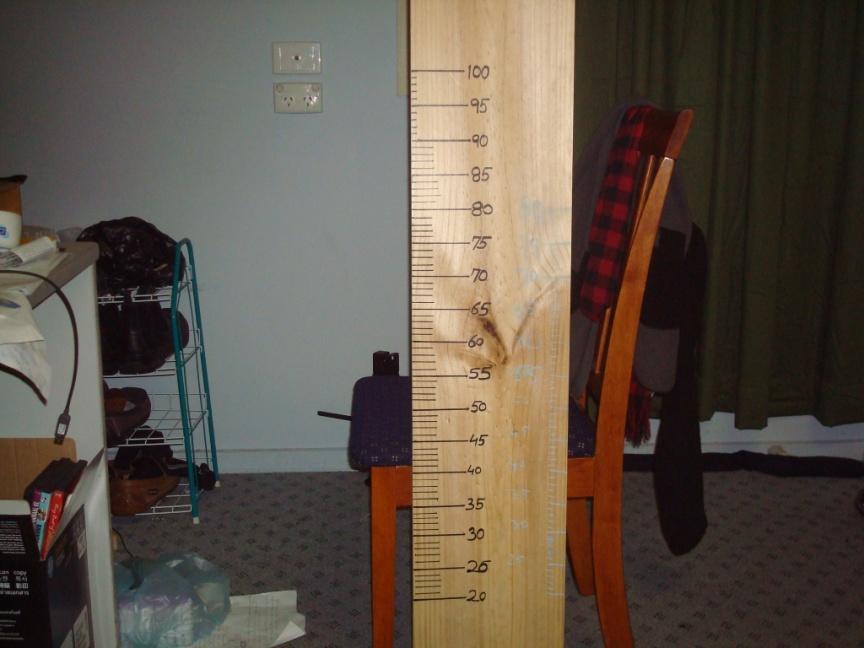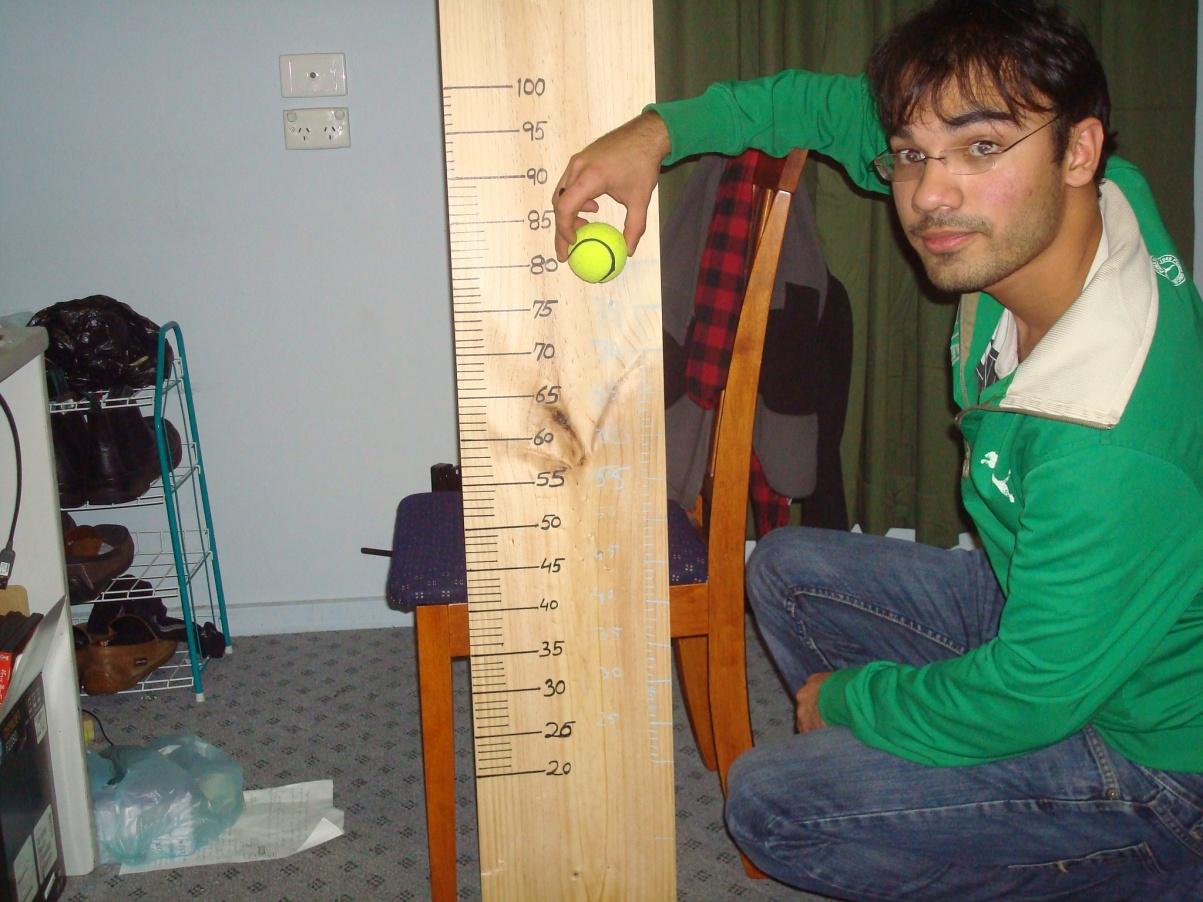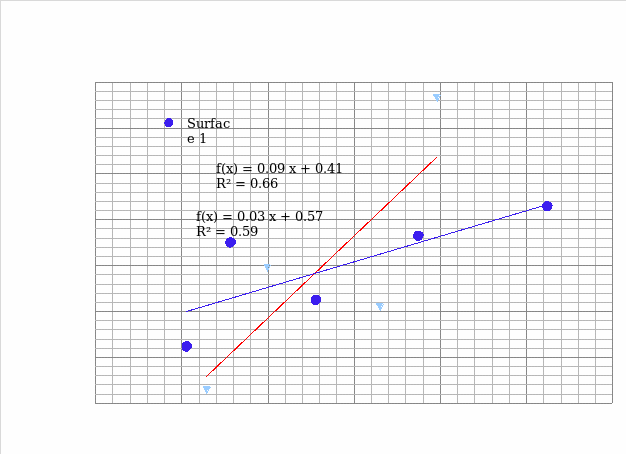Summary
Height of the rebound of tennis balls from two different kinds of surfaces have been recorded when these balls were made to fall freely from predetermined height. These values were used to calculate velocity of approach of tennis ball and coefficient of restitution between the tennis ball and the surface. Variation of the coefficient of restitution was plotted against velocity of approach and it was found that coefficient of restitution increases with increasing velocity of approach.
Introduction
Collision is a phenomenon in which entities approach each-other, interact for a very short time interval and separate. It is interesting to know what remains conserved in this interaction / collision. Matter remains conserved, so does momentum and energy in collision. If we consider that all the particles constitute a system and no external force is acting on the system then even the centre of mass remains conserved. Now let us concentrate on energy, it can change its form during collision so depending upon type of collision kinetic energy of the colliding particles may or may not remain conserved. Depending upon whether the kinetic energy was conserved or not during collision; the collision is classified as elastic (kinetic energy conserved) or inelastic collision (kinetic energy not conserved). Let us consider a system of two particles with masses m1 and m2 approaching each-other with velocities v1 and v2 respectively and after head-on collision separate at velocities![]() and
and![]() respectively. Then relative velocity of separation (vs) will be
respectively. Then relative velocity of separation (vs) will be![]() and relative velocity of approach (va) will be
and relative velocity of approach (va) will be![]() . The ratio of vs to va is known as coefficient of restitution (e); in other words
. The ratio of vs to va is known as coefficient of restitution (e); in other words . For elastic collision its value is 1 and for inelastic collisions its value is less than 1. This will be treated theoretically in the subsequent section; however, the important point to note is that coefficient of restitution is a good indicator of how elastic a collision was.
. For elastic collision its value is 1 and for inelastic collisions its value is less than 1. This will be treated theoretically in the subsequent section; however, the important point to note is that coefficient of restitution is a good indicator of how elastic a collision was.
Theory
Let us consider head on collision between two particles with masses m1 and m2 approaching each-other with velocities v1 and v2 respectively and after head-on collision separate at velocities![]() and
and![]() respectively.
respectively.
Conservation of linear momentum gives,![]() …………………… (1)
…………………… (1)
If collision is elastic then kinetic energy also remains conserved during the collision, therefore,
![]() …………………… (2)
…………………… (2)
Equation (1) and (2) can be solved together to get![]() and
and![]() in terms of m1 and m2 and initial velocities v1 and v2. Some important corollaries can be drawn from the solution of these two equations, which are listed below.
in terms of m1 and m2 and initial velocities v1 and v2. Some important corollaries can be drawn from the solution of these two equations, which are listed below.
- When a particle with velocity v hits another particle of identical mass elastically then the moving particle comes to rest and the particle at rest moves with velocity v.
- Two particles of identical mass when collide elastically then they interchange their velocities.
- If a particle with velocity v strikes a very heavy particle at rest, the heavy particle remains at rest and the light particle reflects or reverts back with same velocity v.
Corollary (c) is relevant to our experiment, where a tennis ball (light particle) hits floor (much heavier than tennis ball); then the ground remains unmoved while the ball reverts back. But in most of the cases the velocity of revert is smaller than the velocity of approach; because the collision is not elastic rather it is inelastic. The ratio of the velocity of rebound to that of the approach is coefficient of restitution in this case and this is expected to be less than 1.
Let us consider a tennis ball being dropped from a height ‘h’ onto a ground; then using kinematics and ignoring air resistance to the ball the velocity of approach will be![]() …………………… (3)
…………………… (3)
Now if the ball rises to height h’ after striking the ground, then, velocity of separation will be![]() …………………… (4)
…………………… (4)
Coefficient of restitution (e) will be![]() …………………… (5)
…………………… (5)
This value has been experimentally measured in these experiments for different velocities of approach.
Materials and Equipment
Following materials and equipments were used in these experiments.
- Chalk
- Timber
- Tennis ball
- Permanent marker
- Measuring tape
- Video camera
Fig. 1 shows the apparatus or the set up used in these experiments.

Experimental Methodology
Using the set up shown in Fig. 1; balls were dropped on the ground from a predetermined height (say h = 80 cm, Fig. 2). The free fall and rebound of the ball was recorded using a video camera and the height of rebound (h’) was recorded corresponding to the height of drop (h). The height of rebound corresponding to the first height of drop becomes subsequent height of drop and so on. These experiments were carried out for two different types of surfaces.

Results and Analysis
Height of rebound for different height of drop is recorded in Table 1 and 2 for surface 1 and 2 respectively. These values were inserted in MS Office Excel spreadsheet and values of velocity of approach and coefficient of restitution were calculated. These values are also recorded in Table 1 and 2 respectively.
The value of coefficient of restitution was plotted against velocity of approach and these plots are shown in Fig. 3 for the two surfaces.
Table 1: Height of Drop, height of rebound, velocity of approach and coefficient of restitution for Surface 1
Table 1: Height of Drop, height of rebound, velocity of approach and coefficient of restitution for Surface 2

From Table 1 and 2 it can be seen that height of rebound is less than height of drop, this is because collision of ball with ground is inelastic; therefore a certain portion of kinetic energy is lost in each collision and therefore, the ball successively looses its height. Further the coefficient of restitution is decreasing with decreasing velocity of approach. In other word the collisions become more and more inelastic with decrease in the velocity of approach. This means there is a fixed component of loss, proportion of which increases in total loss of kinetic energy as initial kinetic energy decreases. Also, at lower velocities of approach, height of drop and height of rebound is lower in magnitude and therefore, the measurement of these heights is expected to be more erroneous.
Possible Errors
There are many possible sources of errors and some of these are briefly described below.
- Least count error in the height measurement as scale cannot be measure less than 0.1 mm.
- A tennis all is not a perfect point mass and therefore, some of its translational kinetic energy is converted into rotational kinetic energy and this causes error in the calculated value of the velocity of approach and hence in the error in the value of coefficient of restitution.
- Surface roughness of the floor causes change in the direction of the ball after each collision and therefore, the collisions are not perfectly head on.
- Air resistance to the tennis ball in descends and ascends has been ignored. This causes error in the calculated values of the velocities of approach and that of rise and hence in the value of the coefficient of restitution.
Conclusions
From these experiments it can be concluded that the coefficient of restitution increases with increasing velocity of approach of the tennis ball. This is due to a fixed component in the kinetic energy loss during the collision event.
References
Class notes and problems on coefficient of restitution.
The Journal of Online Mathematics and Its Applications, Volume 7 (2007), “Bouncing Balls and Geometric Series”, Robert Styer and Morgan Besson